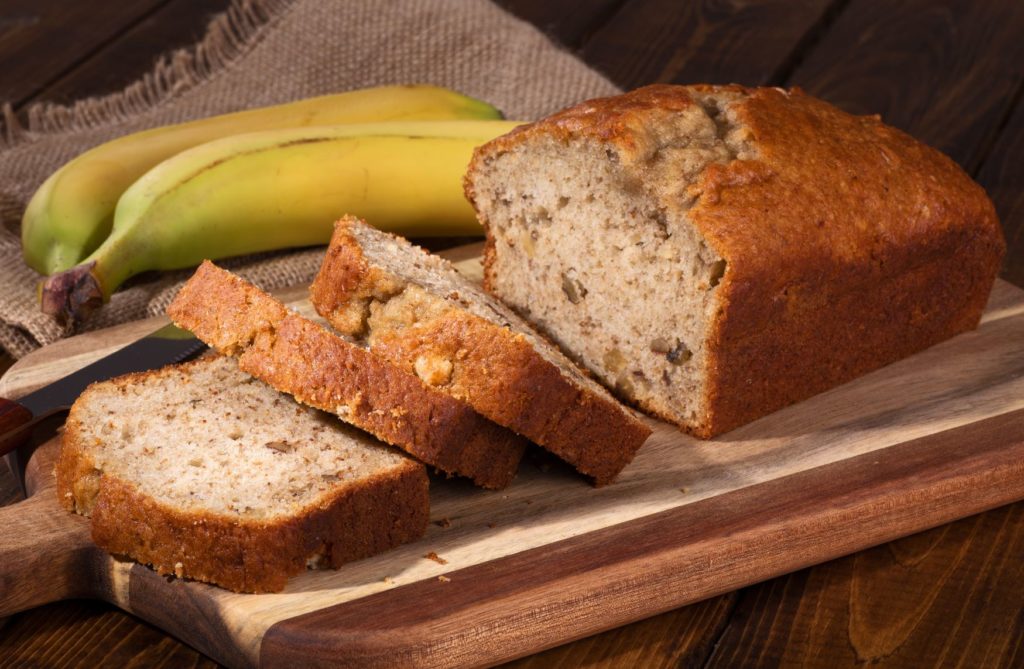Feeding a family of 4 for $100 a week menu can be quite the challenge, but with careful planning and strategic shopping, it is entirely possible. This blog post will provide an extensive guide on how to optimally utilize your grocery budget for healthy meals that the whole family can enjoy.
We’ll explore various strategies such as combining affordable ingredients with pantry staples, reusing ingredients over multiple meals, and prioritizing sale items at grocery stores. Additionally, we’ll share some simple yet nutritious budget-friendly meal ideas that include breakfasts, lunches and dinners.
Further into the article, you’ll discover ways to incorporate meatless options into your menu without compromising taste or nutrition. We also delve into involving kids in the cooking process which not only makes meal prep more fun but also instills healthy eating habits early on.
To round off our discussion about how to feed a family of 4 for $100 a week menu effectively, we’ll touch upon avoiding dining out as a money-saving strategy and using apps that offer price matching features to ensure you get the best deals possible.
Table of Contents:
- Crafting a $100 Weekly Meal Plan for a Family of Four
- Simple Yet Nutritious Budget-Friendly Meals
- Incorporating Meatless Options in Your Menu
- Involving Kids in Cooking Process
- Avoid Dining Out to Save Money
- Get More Bang for Your Buck with Price Matching Apps
- Conclusion
Crafting a $100 Weekly Meal Plan for a Family of Four
Feeding your fam on a budget doesn’t have to be a struggle bus. With savvy shopping and strategizing, you can construct scrumptious yet healthy meals that won’t cost an arm and a leg. The key is to combine affordable ingredients with pantry staples, reuse leftovers, and prioritize grocery store sales.
Combining Affordable Ingredients with Pantry Staples
Pantry staples like rice, pasta, and canned beans are not only cheap but also versatile. You can use them as a base for many dishes like pastas, stews, or salads. Similarly, veggies like carrots, potatoes, and onions are usually inexpensive year-round and add flavor and nutrition to any dish.
Reusing Ingredients Over Multiple Meals
Don’t let any food go to waste. For example, if you roast chicken one night, use the leftovers in sandwiches for lunch the next day or shred it into soups later in the week. This strategy ensures every bit of food purchased gets eaten while adding variety throughout the week. Here are some recipes that make excellent use of leftover chicken.
Prioritizing Sale Items at Grocery Stores
Let grocery store sales guide your meal plan whenever possible, especially when buying meat or fish, which tend to be pricier items on our shopping lists. Check weekly flyers before heading out shopping so you know what deals are available. Here is how you can build up a stockpile using this method. Also, frozen fruits and veggies often go on sale too. They’re just as healthy as their fresh counterparts and last longer, reducing the risk of wasting food due to spoilage.
Simple Yet Nutritious Budget-Friendly Meals
Don’t let a tight budget stop you from eating healthy. Whip up these easy and affordable meals that are both delicious and nutritious.
Budget-Friendly Breakfast Ideas
Begin your morning with a protein-rich meal that won’t break the bank. Scrambled eggs with ham and avocado slices or a bowl of oatmeal topped with fresh fruits are both great options. Feeling fancy? Make some homemade pancakes from scratch using basic pantry staples. Check out these budget-friendly breakfast ideas for more inspiration.
Affordable Lunch Options
Sandwiches are a classic lunchtime staple that are both economical and versatile. Fill whole grain bread with lean proteins like turkey or chicken breast, along with your favorite veggies. Pair it with some veggie sticks and hummus for added nutrition. Need more ideas? Try these affordable lunch recipes to mix things up throughout the week.
Pocket-Friendly Dinner Recipes
Cooking dinner at home doesn’t have to be expensive or time-consuming. Make a large batch of homemade chili using ground beef (or turkey), beans, and canned tomatoes – all relatively inexpensive ingredients that yield multiple servings. Stir-fry dishes are also a great option, allowing you to use up any leftover veggies in your fridge. Check out these easy-to-make budget dinners for more ideas.
Keep it uncomplicated. Stick to easy recipes with minimal ingredients while ensuring each meal provides essential nutrients for your family. Happy cooking.
Incorporating Meatless Options in Your Menu
Who says you need meat to have a delicious and satisfying meal? By incorporating meatless options into your menu, you can save money and still enjoy tasty and healthy dishes.
Delicious Vegetarian Soup Recipes
Soups are a budget-friendly option that can yield multiple servings. Try a hearty lentil soup for a protein-packed meal that will keep you full. Check out Cookie + Kate’s blog for more vegetarian soup recipes that are both delicious and nutritious.
Quick & Easy Meatless Main Dishes
Burritos with beans make a great dish that can be easily tailored to individual tastes. For a more substantial meal, try a vegetable stir-fry over rice or pasta primavera loaded with fresh veggies. Don’t be afraid to explore different cuisines like Indian or Mexican that often feature flavorful vegetarian dishes.
Start by transitioning to a meat-free diet gradually, such as on Mondays, and soon you’ll be able to save money while exploring new ingredients. Surprise yourself with the money you can save in the long run.
Get creative with your ingredients – try new grains like quinoa or bulgur wheat instead of more costly proteins, or use eggs as a cheap yet nutritious source of protein. With so many options, you’re sure to find new family favorites along the way.
Involving Kids in Cooking Process
Cooking with kids is a recipe for fun and healthy eating habits. From washing veggies to kneading dough, involving them in meal prep can turn meal times into a tasty experience for everyone.
Fun Cooking Activities For Kids
Start with simple tasks like rinsing fruits, kneading dough, or setting the table. As they gain confidence, introduce more complex tasks like chopping (with supervision) or following simple recipes. Get creative with DIY healthy snacks that give kids control over what they eat while ensuring they’re getting nutritious food.
Teaching Healthy Eating Habits Through Cooking
The kitchen is a practical classroom where kids learn essential life skills like cooking and nutrition knowledge. By engaging in meal preparation, children can gain a better comprehension of the components that make up their meals and develop healthier dietary habits at an early stage.
Culinary interventions like school gardening programs or cooking classes promote positive changes in children’s food-related preferences, attitudes, and behaviors. So, involving your little ones during meal prep can encourage them to make healthier choices throughout their lives. (source)
Discuss topics like portion sizes or how different foods affect our bodies while preparing meals together. Use resources from reputable health organizations like ChooseMyPlate.gov to teach kids about balanced diets.
Avoid Dining Out to Save Money
Don’t let the temptation of dining out after a long day at work burn a hole in your wallet. Preparing three nourishing dishes in the comfort of your home can result in considerable financial savings each week.
Cost Comparison: Dining Out vs. Home-Cooked Meals
While ordering takeout might seem like a convenient option, it’s almost five times more expensive than cooking at home, according to a cost comparison study by Wellio. That means your $60 restaurant bill three times a week adds up to a whopping $180, while our budget-friendly meal plan costs just $100 for an entire week’s worth of meals – breakfast, lunch, and dinner included.
Resist Temptation with These Tips
- Plan Your Meals: Create a weekly menu to eliminate last-minute stress and reduce impulse purchases or takeout orders.
- Cook in Batches: Prepare large quantities on weekends that can be refrigerated or frozen for later use during busy weekdays.
- Keep It Simple: Include easy-to-make recipes that require less prep time, like this Quick Vegan Chana Masala recipe by Cookie + Kate.
- Pack Leftovers: Instead of tossing leftovers, pack them for next day’s lunch – it saves money and reduces waste.
Note:
Remember, every dollar saved counts towards your financial goals. So, resist the temptation to dine out and cook at home instead.
Get More Bang for Your Buck with Price Matching Apps
Managing a family budget can be made simpler by utilizing the right resources. With the right tools, you can easily find the best deals and stretch your dollar further. Enter grocery price comparison apps with price matching features.
Top Grocery Price Comparison Apps
Grocery shopping apps help you save money by comparing prices across different stores. Here are some of our top picks:
- Flipp: Browse weekly ads from various stores in one place and create a shopping list based on deals.
- Basket: Compare real-time prices at local stores before heading out for your grocery run.
- Favado: Discover the best sales at local supermarkets, drugstores, and big-box retailers like Walmart and Target.
- Shopular: Get coupons and cash back offers from popular retail chains and notifications of nearby sales events.
These apps have user-friendly interfaces, making it easy for even non-tech savvy individuals. They also provide alerts when items on your list go on sale so that you never miss out on potential savings.
Remember to not just look at the lowest price but also consider factors like product quality and convenience. How close is the store? Do they deliver? How much do they charge for delivery?
Incorporating technology into your meal planning process will not only save money but also precious time. Spend that extra time enjoying meals together as a family or doing other activities. So why wait? Start exploring these amazing resources today.
Conclusion
Save money on groceries by creating a meal plan, reusing ingredients, and involving your kids in cooking.
- Get creative in the kitchen with affordable ingredients and pantry staples.
- Shop for sale items and consider meatless options to stretch your budget.
- Avoid dining out and use price comparison apps to save even more.
Feeding your family on a budget can be fun and nutritious!





